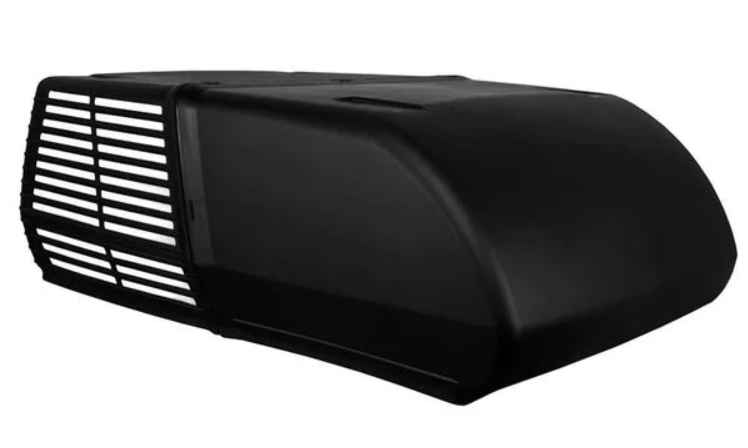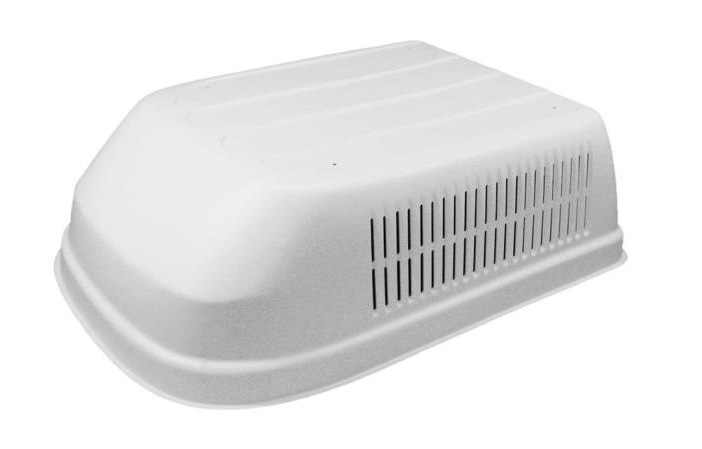WEnRV travel news, products, and industry trends
Mark My Words July: RV Air Conditioning and Electrical Issues
Hi Mark My Words readers! This month, we’ve got questions on RV air conditioning and electrical issues. Remember to send your RVing questions to This email address is being protected from spambots. You need JavaScript enabled to view it..
Mark:
I have a Winnebago motorhome with a Coleman ducted-roof AC. We have condensation leaking into the coach. My inspection reveals no freeze-up on the evaporator coil, and a temperature check shows 20 degrees difference between the air going into the return and that in the outlets. The leak occurs periodically but is consistent. Condensate is running off the roof as well. Need help.
Thanks,
Hkrbr
Hi Hkrbr,
Most Coleman roof airs have two plastic drains for condensation water, located on the sides of the air-conditioning unit baseplate. These will often become restricted by a buildup of dirt and goo, and that can cause the condensate water to find a new path, like into the coach’s interior. The cure is a fairly simple cleaning of the drains and the evaporator compartment. Shut the unit off and, to be extra safe, either unplug from shore power or turn off the breaker that serves the air conditioner.

Photo: Coleman/Camping World
On the roof, remove the plastic shroud. Remove the cover over the evaporator core. Use a spray cleaner, like Fantastic or 409, and clean the evaporator coils and the drip pan. Use a small brush or a piece of flexible wire to clean out the little plastic drains that are found on each side of the baseplate. Button it up, and you should be good to go. I found a very good webpage with pictures and info to help you do the job. Take a look at this website before you get on the roof. As always, don’t take on a task unless you feel it is within your abilities. If you prefer, most RV service providers can do this for you, and it is a fairly easy job, so it should not be all that expensive.
Mark,
My brother has a Monaco Diplomat just like ours, and he asked me a question the other day, and the same issue has puzzled me on occasion. The question is this: If you are plugged into, say, 30-amp shore power, and you have demands like air conditioning, microwave, etc. exceeding your source, can you start your genset and augment your watts without disconnecting the ground power?
Thank you,
Loren

Photo: Getty Images
Hi Loren:
The short answer is yes and no. You can’t use the generator to supplement your shore power in most rigs. Most RVs with installed generators are equipped with a transfer switch that is designed to disconnect your shore power connection and connect the generator’s output to your rig’s electrical system. It’s kind of an either/or situation. Rigs without automatic transfer switches may require you to plug the rig’s shore power cable into an outlet on the rig that the generator feeds. Other RVs will have a switch that will transfer the input side of the rig’s AC power system from the shore power cord to the generator when the generator begins supplying power. This is done to prevent your power cord from becoming “hot” when the generator is running and to prevent your generator output from feeding back into the shore power receptacle. If the shore power isn’t able to handle the load, you can safely start the generator in most RVs with the shore power cord plugged in, as the transfer switch will disconnect the shore power input and switch all AC loads to the generator automatically. It won’t be a “shared” load, though.
Mark:
How do you check a converter/charger to see if it is working properly? I don’t believe that mine is trickle-charging my battery.
George
Hi George,
Here’s a simple test that’s really easy, and all you need is a digital voltmeter. Leave the RV plugged into shore power overnight, and then check the voltage directly at the terminals of the house battery(s) with your meter. If you are reading 13.2 to 13.8 volts, then your converter is probably fine. If it is below 13v, chances are your converter is broken, is not getting AC power, or the connection between the battery bank and the converter is open. If the answer is “none of the above” or your voltages are way out of range, get an RV tech to look at the system.
Hi Mark,
Do you know any way to improve the efficiency of my basement residential AC unit in my Winnebago motorhome? I love the motorhome, but I definitely need more cooling. Can a rooftop unit be installed in the place of the Fantastic vent system in the coach? I could use this to supplement the main unit on a hot day.
Thanks
Chuck
Hi Chuck,
Before you look into adding an air conditioner, take a good look at the basement unit to make sure there are no easy-to-fix issues. Make sure the intake air filter is clean and the cooling coils are free of any dirt or fuzz buildup. Also check the condenser coils. Dirt can really reduce the efficiency of the heat transfer. Check your manual for help in identifying the various components of your basement system and for cleaning procedures. Also, check both the supply and return air ducting wherever possible. It is not uncommon to find places where the ductwork has come loose and created air leaks. It doesn’t take much of a leak to make a big difference in cooling capability. Finally, with the unit operating, test the air temp at both the intake and at the outlet. You should see at least a 20-degree temperature drop through the system. If everything looks good and you still need more cooling, then it is definitely possible to add roof air to any standard roof vent. The biggest issue is getting power to it. In most cases, it will be a project for a good RV service facility.

Photo: Camping World
Mark,
I have a Citation travel trailer, and my AC keeps tripping the circuit breaker. This happens even if it’s on low or only on the fan. I’ve already had a new thermostat and board put in when the AC seemed to “cycle” (always ran, never shut off when reached temp). I’ve also replaced the converter. New ACs can be very expensive ($1200) and I am hoping that is not the next step. Do you have any suggestions besides a costly replacement?
Joyce
Hi Joyce,
If the A/C is tripping the breaker even when it is on “fan only,” then there may be either a wiring problem, a problem with the A/C fan or controls, or the circuit breaker itself may be failing. Normally, the fan-only setting should not draw enough current to trip the breaker. I would first replace the AC circuit breaker for the air conditioner. Breakers do fail occasionally, and it is an inexpensive and relatively easy thing to try first. If replacing the breaker does not solve the problem, then you need to have a qualified service person check out the wiring and the A/C unit for problems. A tripping breaker signifies an overload condition or a short circuit, so for safety’s sake, the problem needs to be identified and corrected, a.s.a.p.
The post Mark My Words July: RV Air Conditioning and Electrical Issues appeared first on Good Sam Camping Blog.
Copyright
© Good Sam Camping Blog


